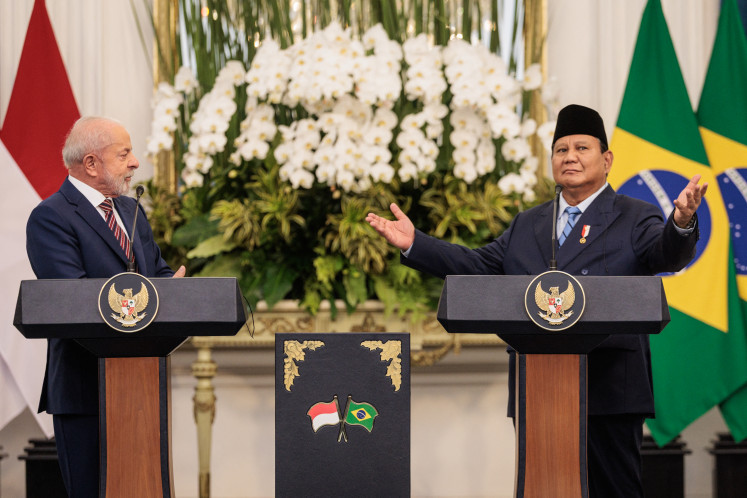Popular Reads
Top Results
Can't find what you're looking for?
View all search resultsPopular Reads
Top Results
Can't find what you're looking for?
View all search resultsIndonesian palm oil exports surge by 8.9 percent in H1
Indonesia’s palm oil exports increased by 8
Change text size
Gift Premium Articles
to Anyone
I
ndonesia’s palm oil exports increased by 8.9 percent in the first half of this year to 8.2 million tons, up from 7.47 tons in the same period last year, the Indonesian Palm Oil Producers Association (Gapki) says.
Gapki chairman Fadhil Hasan said on Tuesday that projections were exceeded as exports had been almost half of the projected total this year. Gapki projected this year’s export to reach 17 million tons, up by 8.97 percent from the 15.6 million tons exported last year. The 2010 figure was only a 0.8 percent increase from 15.53 million tons in 2009.
“Usually, demand soars in the second semester, mainly due to various festivities such as Idul Fitri and Christmas, and still relies mainly on key buyers,” he told The Jakarta Post over the phone.
Fadhil said the first semester rise was driven by higher demand from major buyers, including India, the EU and China.
“This year, worry over climate change impacts that cut harvests have pushed buyers to buy large quantities of agricultural commodities, including palm oil, partly for stocks,” he said.
Fadhil added that various constraints over the country’s palm oil, such as environmental concerns linked to expanding palm oil plantations, dubbed by local growers as “negative campaigns”, had so far not hindered exports, as shown by surging demands from the EU.
The EU imported 1.63 million tons of palm oil in the first semester this year, up 10.88 percent from 1.47 million tons in the same period in 2010, making it the second-largest importer of Indonesia’s palm oil.
“This proves that palm oil is necessary for [the EU], as it is cheap and efficient,” he said.
Indonesia, currently the world’s largest palm oil producer, exports palm oil in the forms of palm oil and kernel oil, both in crude and processed forms.
Gapki data shows that in the first semester, palm oil still dominated the country’s total palm oil exports with 7.55 million tons, 92.07 percent, with the remaining 652,000 tons, 7.97 percent, being kernel oil.
Out of the 7.55 million tons, Fadhil said 46.19 percent was in processed form, down from the 43.98 percent in the same period last year.
“From the data, we cannot conclude decisively that the government’s export tax is effective in promoting the downstream palm oil industry,” he said.
Fadhil added that the tax also did not reduce crude palm oil (CPO) exports or increase processed palm oil exports, such as olein, stearin and fatty acid, because demands for CPO were higher.
The government recently said it would issue a new tax on palm oil exports.










